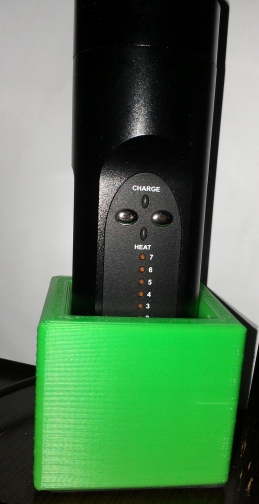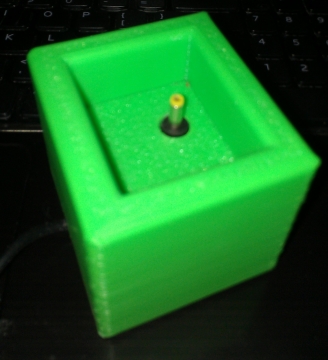After a much needed visit to the garden with my Solo it occurs to me to bring up a couple of what I think are fun artifacts of the unit.
First off, when holding temperature (say at 4) the heat light flashes from time to time to make up for lost heat. If I let it idle the 4 lamp usually stays lit, but if I hit it hard enough it drops to 3 as the heater comes on (light flashes) and climbs back up to four, heats a bit more and goes off. All well and good, I assume others see this. But watch the top (number 4 in my example) light carefully and it winks off for a bit just as the flashing stops? This is a false reading, of course, the temperature didn't suddenly drop a notch and climb back on it's own. I think this is an all digital processor (it 'reads' temperature with it's only A/D, Analog to Digital, converter and decides when to heat and how many lights to show). The display is multiplexed, wave it around in a dark room and you get dots for trails, not streaks, it flashes the lights at us at a very fast rate. So I think that the software gets distracted when it shuts down the heating and misses some flashes on the top lamp?
And even more obscure one shows up as it boots up. Let it time out with a fairly full charge. Then click it back on and watch the display carefully. Let's say we were just running at level 4 again. I see the idle light come on, the top light flash, get the beep (enabled on mine at present) then the display of the battery condition (all normal) and then it shifts to temperature display mode. We know it's at four or just below because it was only a few seconds since it was on, but light number five comes on! And stays lit for several seconds, when it finally goes out, the number 4 flashes briefly and goes out since by then the temperature is really down. Sometimes 4 doesn't really come on but a fraction of a second. Where did the 5 come from?
If I do the same test with a nearly discharged battery the temperature 'overshoot' displayed doesn't happen.
I think there's only one A/D. They're a little expensive, it's easier and cheaper to share often. I think it uses that one channel to read the battery voltage then shifts to read the much lower signal representing temperature to convert it for the processor to 'read'. Such converters are typically filtered to remove noise, meaning they can respond to changes slowly but show stable numbers. My guess is errors in the timing of the samples are at the heart of this?
Both of these, I think, 'can be fixed in software'.....basically where they came from? I've got a MiA4, do you guys see these little artifacts? It's entirely possible I'm imagining the whole thing of course.....
TIA
OF






